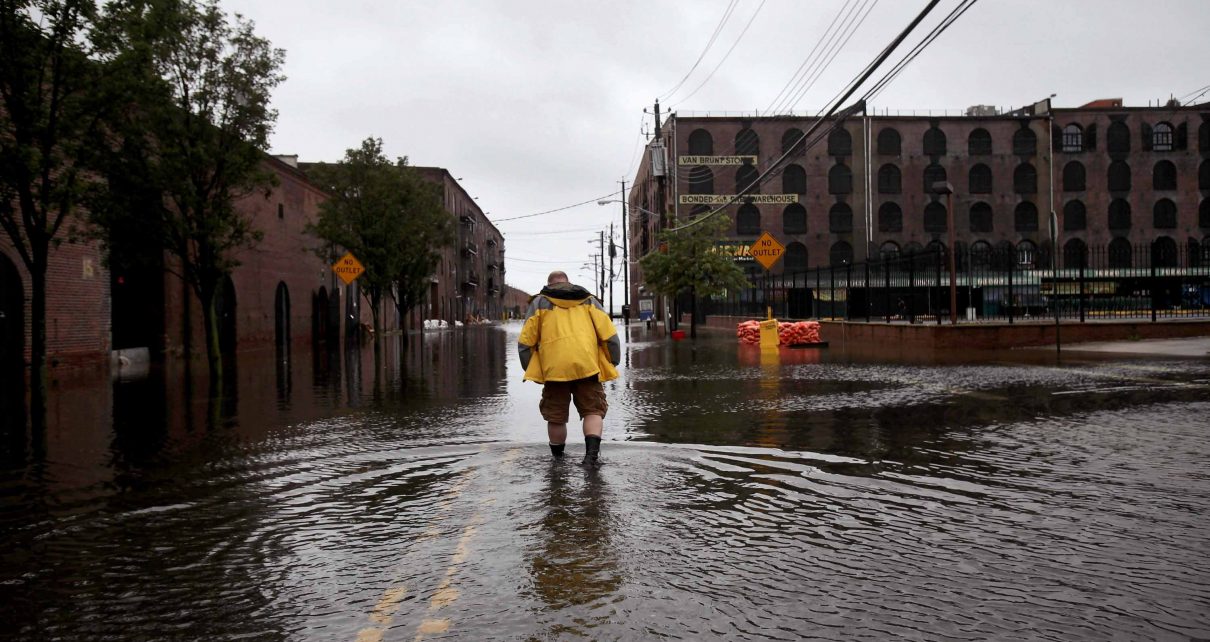Climate change is straining the social fabric that holds communities together. But—if not done correctly—positive efforts meant to respond to global change can have a negative impact, too, according to new findings.
In a nearly 50-page report released last week, the nonprofit EcoAdapt and the University of California, Berkeley’s Urban Displacement Project found that “climate change stressors and impacts” are primary concerns for most communities, especially those with disadvantaged populations.
However, efforts to reduce impacts through adaptation and resilience measures must be meshed with other concerns like affordable housing, food and water security, as well as safe and vibrant neighborhoods. Failing to balance climate and other priorities can result in “displacement”—where individuals and families choose to leave a neighborhood or community.
“Displacement—whether temporary or permanent, forced or voluntary—is an issue rooted in inequity and exacerbated by climate change,” the report states. “Climate change poses significant threats to the physical, cultural, spiritual, social, and economic displacement of communities around the world. It is also causing increasing mental and emotional distress or ‘solastalgia’—the loss of sense of place or identity.”
For example, building new parks and enhancing green space for outdoor recreation and carbon sinks may meet a long-term climate objective, but they could also drive up real estate prices and displace low- and middle-income families due to gentrification, the report says. Aligning residential and transit development is also a well-known climate adaptation solution, but it can affect housing equity and community displacement, experts say.
“Our results show that [disadvantaged] people are concerned about the big picture with respect to climate change,” Rachel Gregg, the study’s lead author, said in a telephone interview. “But there are other things that they worry about day to day. If you add on climate change as a layer, it may undermine other needs” like paying the power bill or making monthly rent.
In some cases, projects aimed at addressing climate change risk can even have “maladaptive” effects that increase displacement and community stress. For instance, building a flood wall or elevated road through a close-knit neighborhood can sever people from one another and may increase the time and travel costs for trips to home, work, schools, churches and retail stores.
“It can be challenging,” Gregg said. “Sometimes you make these kinds of choices thinking it’s going to be a good thing, and then it has these other unintended effects. It often becomes, ‘What are the best [adaptation] practices and what are the worst practices?’”
To that question, the authors provided five case studies that they say strike the right balance between climate adaptation and other community needs—three from California and two from Georgia.
In Los Angeles, for example, where homelessness and racial and economic inequities may be exacerbated by climate change impacts, the national nonprofit Enterprise Community Partners is partnering with local organizations “to promote affordable housing, advocating for anti-displacement policies, and building climate-resilient communities,” the report states.
An effort spearheaded by the Atlanta-based Partnership for Southern Equity is working with community groups to address inequities and displacement caused by development and climate-related pressures. Officials say Atlanta’s top climate change impacts are flooding, drought, extreme heat and degraded water quality. “Historically marginalized communities have received the brunt of the city’s major flooding impacts and displacement,” the study found.
The case studies will advance efforts by the Strong, Prosperous and Resilient Communities Challenge, or SPARCC, a collaboration among ECP, the Natural Resources Defense Council and the Low Income Investment Fund to promote affordable climate-resilient housing.
Marissa Ramirez, NRDC’s climate lead for the SPARCC initiative, said the study opened a new avenue of innovation on climate resilience and adaptation by stressing social equity, health and the justice needs of at-risk communities.
The survey approach was unique because it provided on-the-ground interaction with real communities that are wrestling with both climate change and displacement. Now, she said, communities must implement the ideas so they can better inform policy decisions and future strategies.
Vrunda Vaghela, director of national initiatives at ECP, said the research effort shouldn’t be used to downplay climate adaptation solutions, but “to help better understand the relationship between the pressures that are exerted by climate change and the unintended consequences of climate adaptation.”
Reprinted from Climatewire with permission from E&E News. E&E provides daily coverage of essential energy and environmental news at www.eenews.net.




